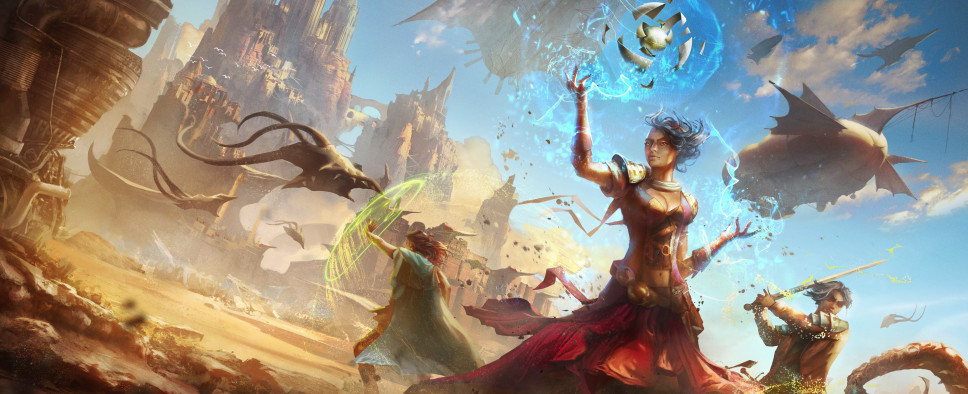Torment: Tides of Numenera Interview
-
Category: News ArchiveHits: 1229

The Italian Torment: Tides of Numenera Tumblr has an interview with Chris Avellone, focused on the inXile's spiritual successor to Planescape: Torment (if it wasn't clear enough by the fact that the blog is dedicated to the title). Here's an excerpt:
Tides of Numenera will be an heavy-text game and Pillars of Eternity will have its share of dialogues, text-descriptions and even choose-your-own-adventure-encounters. How do you feel about that? Recently you experimented a lot with visual narratives and - if I recall correctly - you stated before that additional dungeons and combats (so less emphasis on text and dialogues) would have made Planescape: Torment a better game. Do you still feel the same way about that?
If the story can be accomplished visually or with audio, I prefer it. By audio, I don't mean dialogue that's voiced, or even spoken audio logs, but SFX in the environment. I feel BioShock and Halflife have it right in presenting a story to the player and allow them to participate in piecing together the experience through the arrangement of props and visuals.
That said, Torment has some very experienced writers on staff, and if you're in the mood to read, you won't find the word choice lacking.
I'd like to ask you something that I've already asked Kevin Saunders, even if it is not a Torment related question. Wasteland 2 will feature a fully developed world-map gameplay, with elements of exploration and resource management. Can we expect something similar from Pillars of Eternity? What's your opinion on free-roaming in RPGs? Do you feel it adds to the genre? And since you have been working on many non-linear games, what's the impact of free-roaming on your writing process?
I love free-roaming, and I feel it makes the player empowered to have their own story. When doing a free-roaming game, the idea is to create an interesting backdrop and interesting characters to interact with, but you don't inflict (inflict is a harsh word, but.) characters and plot points on the player and force them to interact with the NPCs or the story.
My personal preference would be doing a plot where a variety of the player's actions makes the plot come to him, not the reverse.
You are well known for the memorable characters you wrote for pretty much every game you've worked on. You've also stated many times that themes and game systems should play a role in the writing process of an RPG, especially when it comes to companion design. Can you tell us how these elements influence your work both in Torment and Pillars of Eternity?
I laid out some companion specs for design based on 15+ years doing it, and those same principles were re-examined for Torment as well, with one exception: Kevin and I agreed that there may be Torment characters that don't serve a game mechanic function as long as their narrative presence is strong (which is fine). Although, that didn't stop me from trying to suggest new ways to make those narrative-based characters still contribute to the game mechanics.

